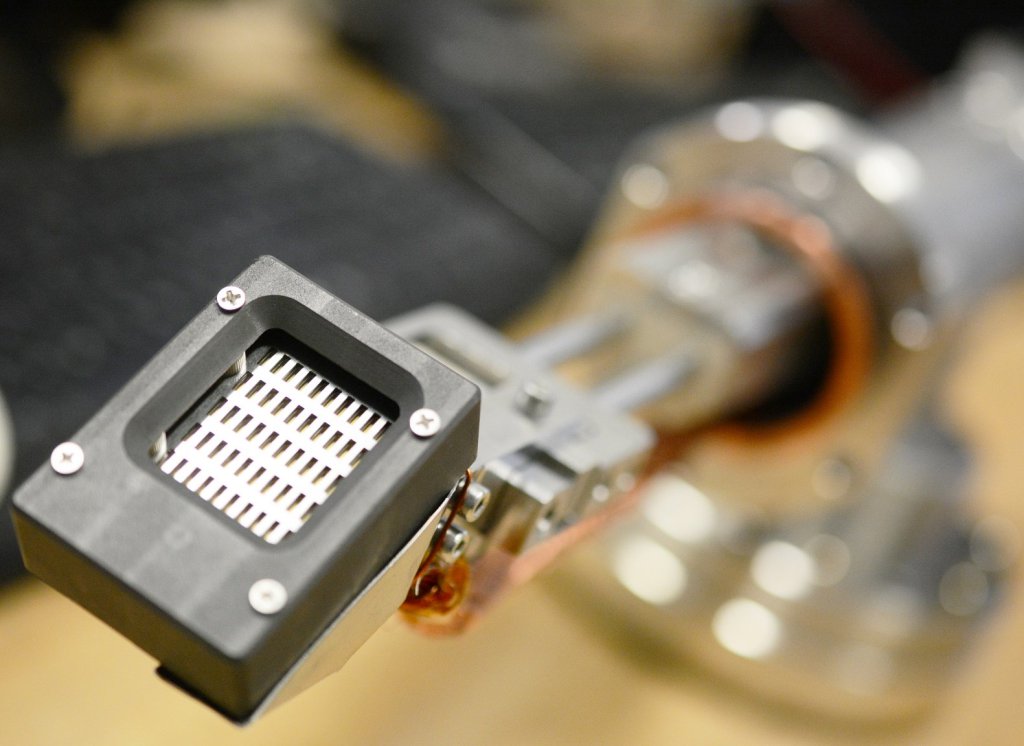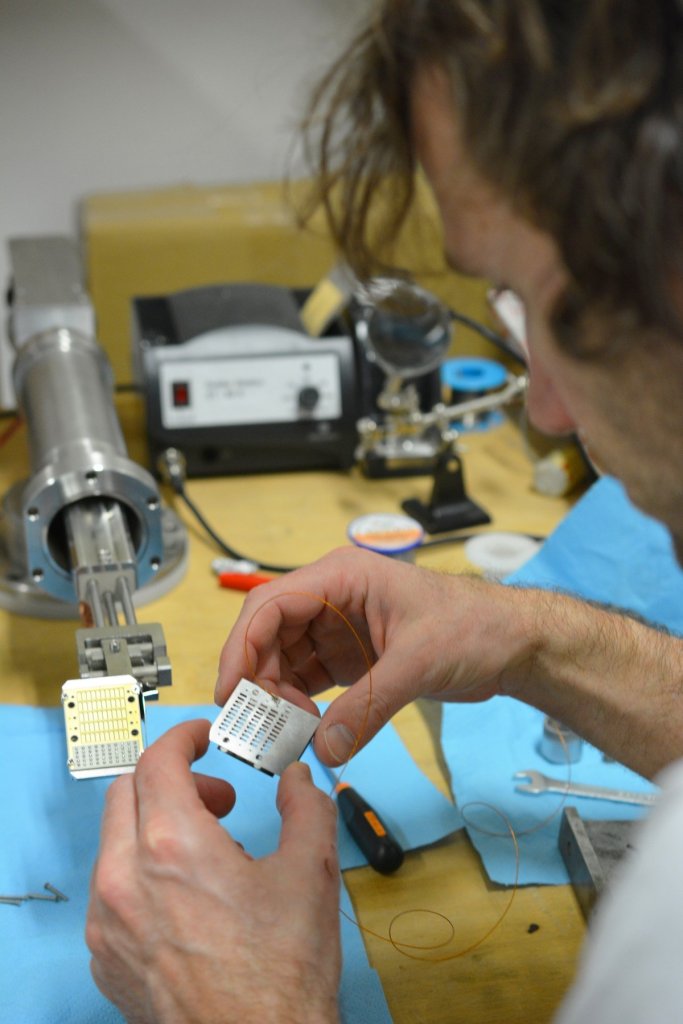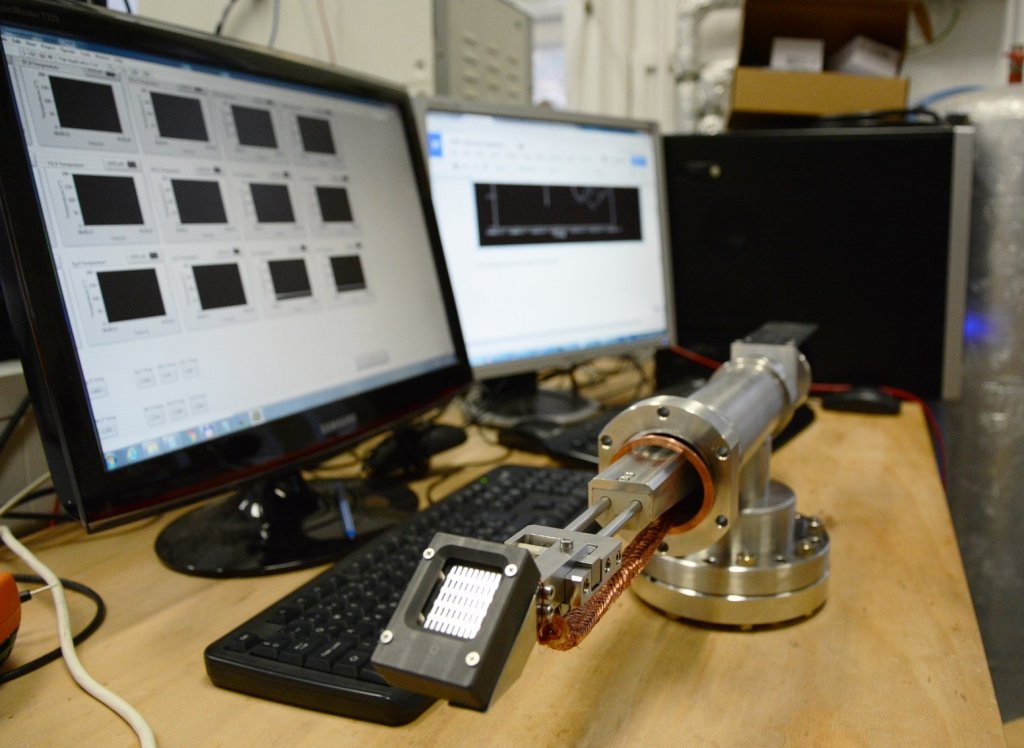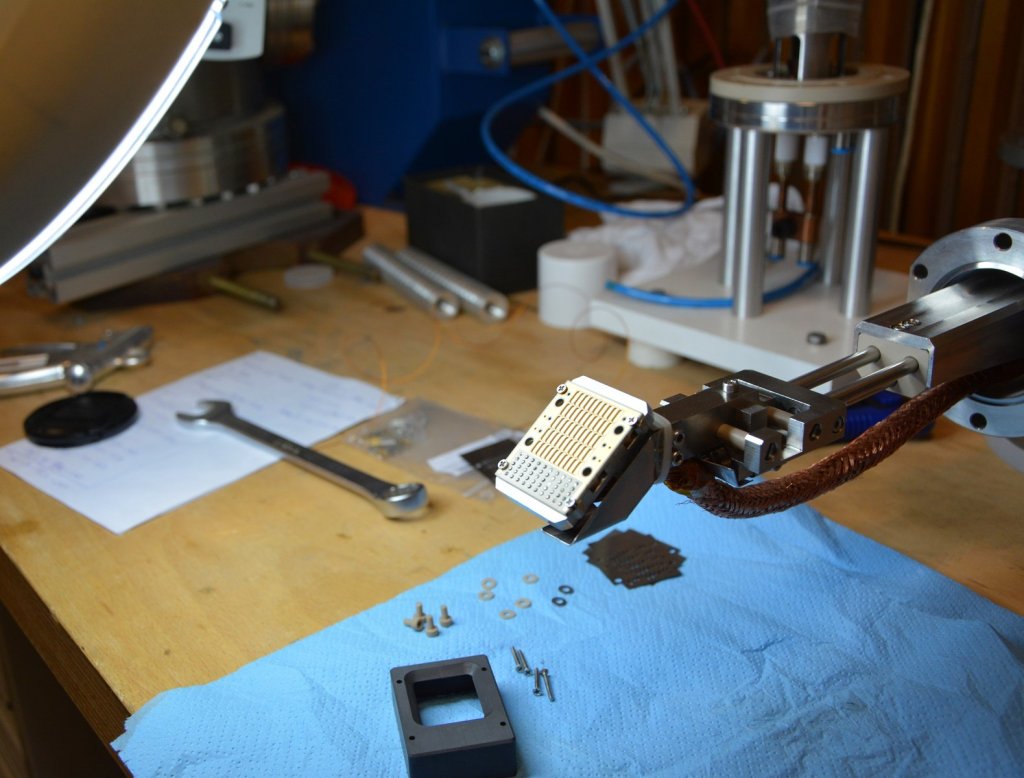
The atomic beam probe is a unique extension of the beam emission spectroscopy (BES) diagnostic, being developed at the Wigner Research Centre for Physics (Hungary). You can read about the BES diagnostic and the research activity of the BES group in more details on the Wigner RCP website.

The BES is a special tool to diagnose plasma edge density.

The working principle is the following: we make an accelerated ion beam which is neutralized in Sodium vapor thus we get an atomic beam, which can be shot into the plasma, since the strong magnetic field has no effect on atoms.The beam atoms are excited by the plasma particles, and emit photons during the de-excitation which results in a glowing beam. This emission is measured by high speed, high sensitivity cameras and we try to find out the plasma edge properties from that.

We utilize another process as well with the atomic beam probe - which happens simultaneously with the glowing, namely the ionization, since the beam atoms lose their electrons due to the collisions with the plasma particles. However, the magnetic field acts on the ions, those are deflected through a curved path from the beam and collides with the wall of the machine. The spatial distribution of the ions hitting the wall carries important information about the magnetic field at the point of the ionization. The magnetic field at the ionization location depends on the current distribution in turn, which cannot be measured by other means, which makes the atomic beam probe a unique diagnostic in its kind.
So the aim is to measure the current distribution and its fluctuations at the plasma edge, which can be done through the measurement of the spatial distribution of the ions leaving the beam. A special detector head and a measurement system was built for this purpose by the Wigner RCP team, the lab tests are currently underway, and the system will be installed at the COMPASS tokamak experiment shorty, the first results are expected in January.



